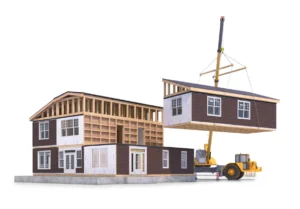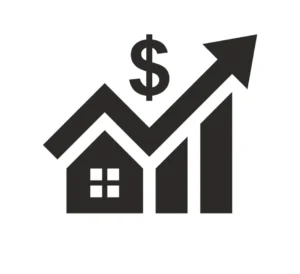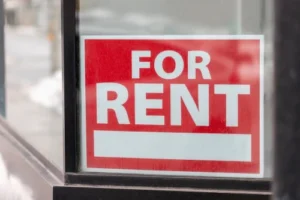How to Maximize Profit

Value Add Opportunity in Real Estate
What Is a Value Add Opportunity?
A value add opportunity in real estate is a strategy. Investors buy properties that are not doing well. They make improvements to increase income, value, and overall returns. Value-add deals target buildings that need work.
These buildings often have outdated interiors, bad management, or low rental prices. Instead of purchasing stable assets that are already improved, investors look for these opportunities. These buildings can be updated for higher profits.
The core objective is to increase net operating income (NOI). Property values in commercial and multifamily real estate depend on NOI and cap rates. Even small improvements can lead to significant increases in value.
Raising rents by $100 per unit on a 20-unit property brings in an extra $24,000 each year. This increase adds about $400,000 in value at a six percent cap rate.
This ability to “force appreciation” instead of depending on market growth makes value add opportunities very appealing. Investors want strong risk-adjusted returns.
How Value Add Investments Work
Value add projects improve both physical condition and operational performance. Common strategies include:
-
Renovate outdated interiors with new flooring, appliances, lighting, and countertops to justify higher rents
-
Enhance curb appeal with landscaping, exterior paint, signage, and parking improvements to attract stronger tenants
-
Add or modernizing amenities such as laundry facilities, gyms, dog parks, or package lockers
-
Reposition the property to serve a different tenant profile, for example targeting professionals instead of students
-
Optimize management to reduce expenses, streamline operations, and boost efficiency
By combining upgrades with operational improvements, investors create higher NOI, which increases property value and allows refinancing or profitable sales.
Get a Free Multifamily Loan Quote
Access Non-Recourse, 10+ Year Fixed, 30-Year Amortization
How to Identify a Genuine Value Add Opportunity
Not every property marketed as “value add” is worth the label. Some sellers use the term loosely to attract buyers. To identify real opportunities, investors must look for:
-
Strong locations in healthy rental markets with consistent tenant demand
-
Rents that are below market rate and have room for growth
-
Moderate deferred maintenance that can be resolved without excessive cost
-
Operational inefficiencies that can be corrected through better management
-
Clear, achievable renovations that align with tenant demand and budget
Warning Signs to Avoid
-
Major renovations already completed by the seller with little remaining upside
-
Severe structural issues, code violations, or environmental hazards that outweigh potential profits
-
Properties with poor layouts or unit mixes that cannot be fixed cost-effectively
-
Rent growth assumptions that are not supported by the local market
The best opportunities are underperforming properties in strong markets, where reasonable improvements can unlock significant upside.
Real-World Example of a Value Add Strategy
The Property
An investor acquires an eight-unit multifamily property in a neighborhood with rising demand. Current rents are $800 per two-bedroom unit, while comparable buildings rent for $950. The property is listed for $600,000, or $75,000 per unit.
The Plan
The investor allocates $6,000 per unit, or $48,000 total, for interior renovations including updated flooring, modern appliances, new lighting, and countertops. Projected rent increases are $150 per unit.
The Results
-
New annual rental income: $91,200 ($950 x 8 x 12)
-
Operating expenses: $40,000
-
New NOI: $51,200
-
Property value at a 6.1 percent cap rate: approximately $839,344
The renovations create $239,344 in added value with only $48,000 invested. The payback period is just 3.3 years, well under the common four-year benchmark.
When It Doesn’t Work
If renovations cost $10,000 per unit but rents only increase by $40, the result is an $80,000 renovation with just $62,950 in added value. Instead of creating equity, the investor loses $20,000 and faces a 21-year payback period. This demonstrates why disciplined underwriting and realistic assumptions are essential.
Why Value Add Investments Are Popular
Investors pursue value add opportunities because they provide:
-
Forced appreciation based on NOI improvements rather than speculation
-
Higher cash flow through justified rent increases
-
Faster equity growth compared to turnkey properties
-
Greater control over outcomes through proactive improvements
For many investors, value add strategies are the key to transforming a modest portfolio into long-term wealth.
Key Takeaways for Investors
Value add investing can deliver exceptional returns, but it requires careful execution. To maximize success:
-
Verify that the local market can support the rent increases you project
-
Align renovation costs with realistic returns and tenant demand
-
Calculate payback periods before committing capital
-
Avoid properties with structural or location issues that cannot be fixed
The most successful deals are those where targeted improvements create measurable increases in income and property value.
Final Thoughts
A value add opportunity in real estate is not about gambling on market growth. It is about making strategic, calculated improvements that unlock real wealth. By focusing on properties with untapped potential, disciplined investors can accelerate portfolio growth, strengthen cash flow, and build lasting equity.
Source: Rod Khleif













 Accessibility
Accessibility